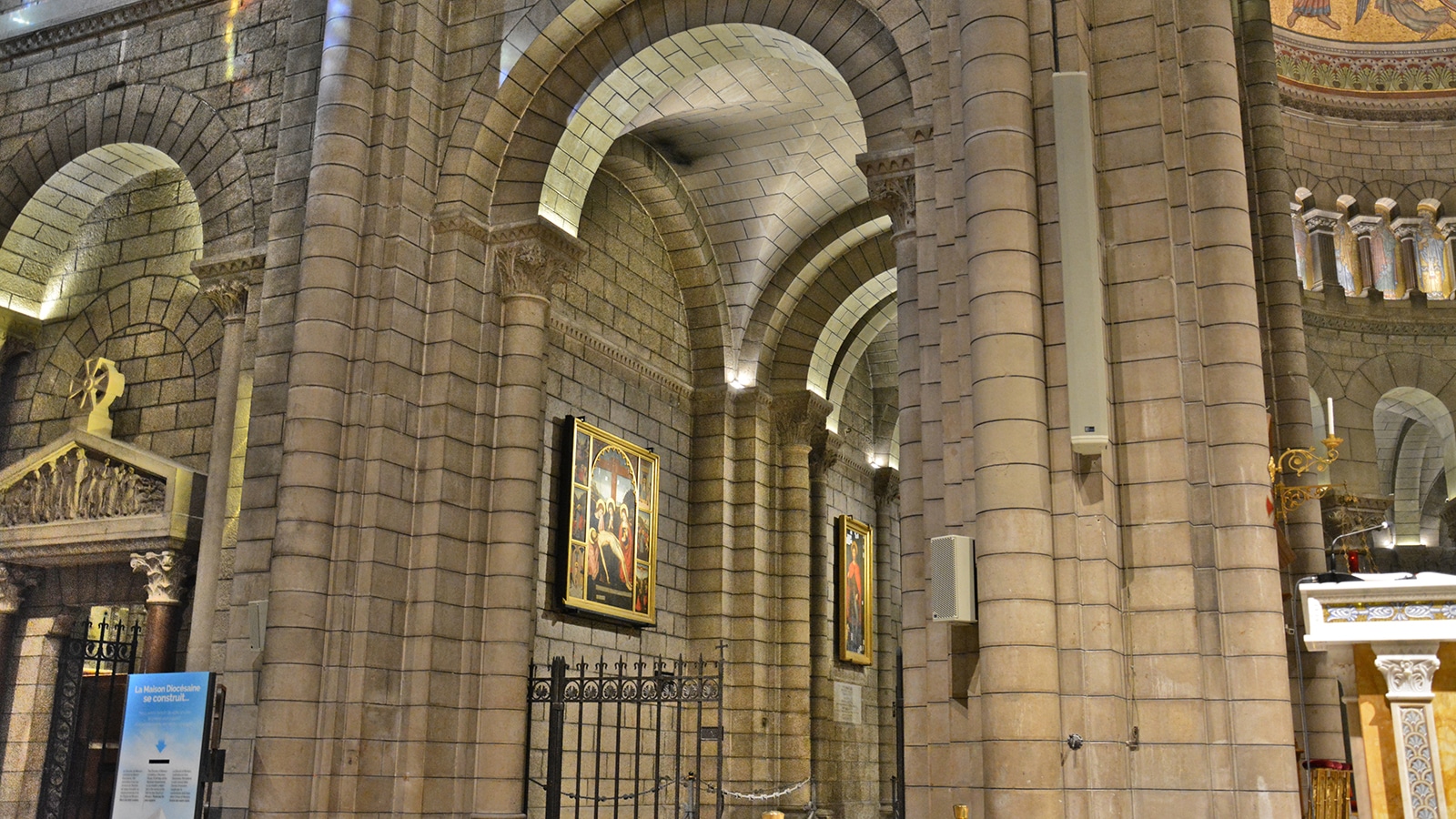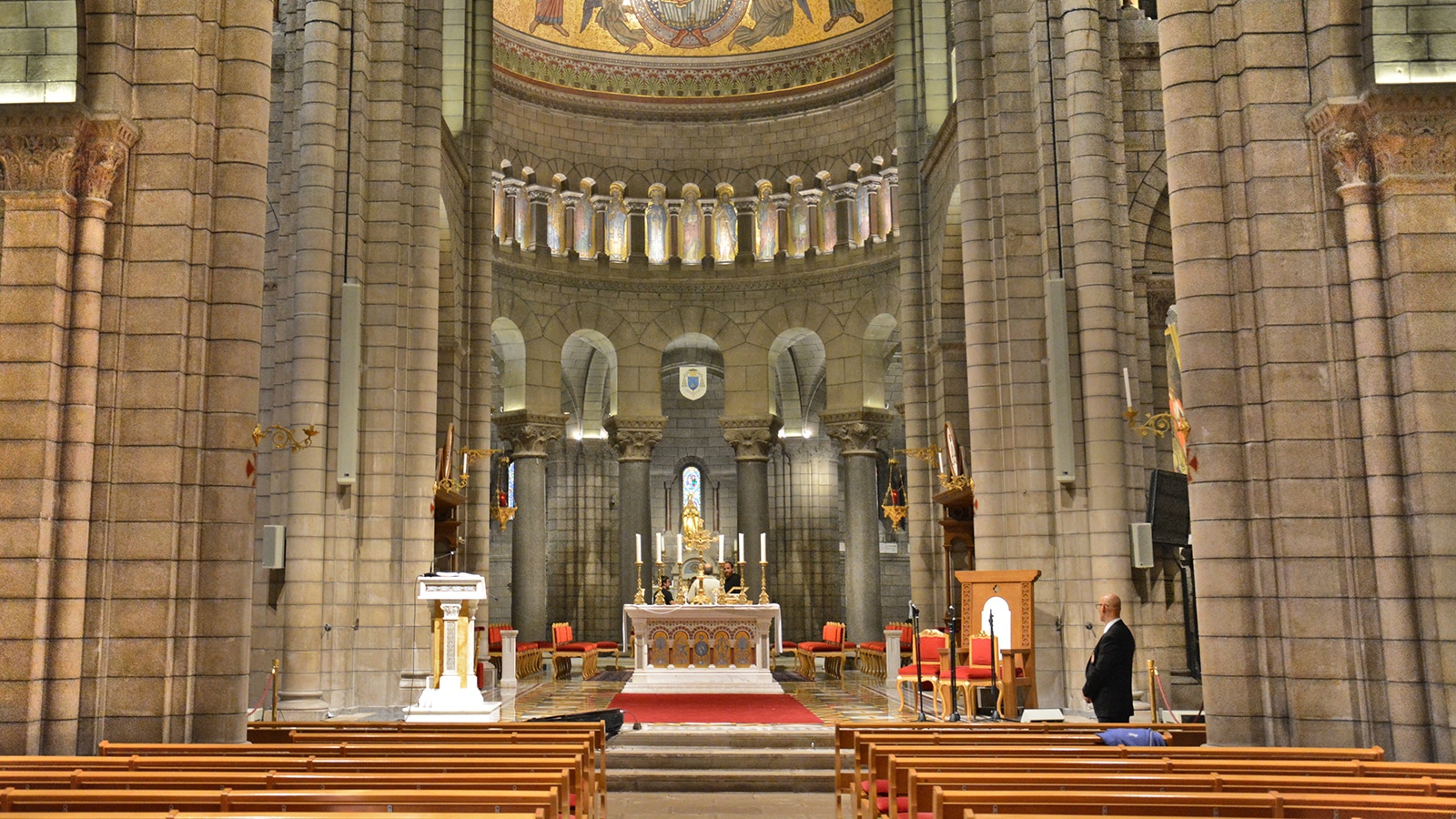Meyer Sound Laboratories, Inc.
Berkeley, CA 94702
United States


Though certainly better known for its sumptuous Casino de Monte Carlo, the Principality of Monaco is also home to the resplendent Monaco Cathedral, an impressive example of Romanesque Revival architecture dating from 1903. The cathedral’s soaring vaulted interior presents a dazzling feast for the eyes, but unfortunately it also creates highly reverberant acoustics that had confounded earlier attempts at achieving musical clarity and speech intelligibility when using sound amplification. Determined to overcome the problems using the best available technologies, the responsible ecclesial and governmental authorities commissioned an audio system renovation that culminated with an installation of a high-precision Meyer Sound system based around CAL digital beam steering column array loudspeakers.
Far from being a museum, the cathedral plays a vital role in the spiritual and cultural life of the city. In addition to the regular schedule of Catholic masses, the cathedral hosts a varied schedule of musical events, including symphony orchestras and amplified contemporary ensembles in addition to the world-renowned Monaco Boys’ Choir (Les Petits Chanteurs de Monaco).
Serving as an acoustical consultant and sound designer on the project was Dominique Heymès, who was selected based on his success in earlier renovations at the Monaco Opera House. When taking on his new assignment at the cathedral, his brief was to find a far superior replacement for “a 100V line system that did not allow management of different areas, resulting in intelligibility that was catastrophic,” in the words of Heymès.
“Several options were open to me,” he continues, “but the — revolutionary in my opinion – CAL from Meyer Sound initially stood out as the ideal choice, and this impression was reinforced with further studies and measurements. I’ve always appreciated Meyer Sound for sophisticated products offering technologies that are often irreplaceable. In this case, the ability to use the CAL directivity beams in a thorough and precise way proved to be a determining factor.”
José Chaves of Paris-based Best Audio plotted the specifics of the new system design. As installed, the system is anchored by two CAL 64 column array loudspeakers placed in front of the altar. To cover acoustically isolated areas or seating shadowed by columns, delay systems were added comprising a total of 25 Meyer Sound IntelligentDC series loudspeakers, including UPM-1XP, UPM-2XP, UP-4XP and MM-4XP models. In addition, dual 750-LFC low-frequency control elements assure full bandwidth bass extension for contemporary music, while two Galileo GALAXY processors supply system drive and optimization. All loudspeakers are factory color-matched to the surrounding stonework.
The system was installed by Monaco-based Accord Son Lumière under the direction of Jean Michel Mounier and Thierry Chambet. Marco de Fouquières of Dushow in Paris came to Monaco for the final tuning of the system.
According to Heymès, the listening tests for the CAL loudspeakers proved to be a decisive revelation, and his conclusions were shared by others participating in the evaluations.
“We listened to classical music recordings first, and everybody was enthusiastic about the fidelity and precision of the sound. I heard comments like, ‘We have never heard anything like that before! Dazzling!’ We followed with tests of live spoken word from different places, and I saw in all eyes the light of complete satisfaction. I heard comments such as ‘It’s superb, with everything perfectly intelligible everywhere in the cathedral.’ We ended with amplified music tests – guitar, vocals, bass and organ – and the musicians were overwhelmed by the quality of the sound.”
Beyond his expertise in sound and acoustics, Dominique Heymès is widely recognized as a multi-media artist, with noted accomplishments as a musician, composer, photographer, painter and writer.
Though commonly referred to as Monaco Cathedral, the church’s formal name is Cathédrale Notre-Dame-Immaculée (Cathedral of Our Lady of the Immaculate Conception). It is also known by many in the vicinity as Saint Nicholas Cathedral, taking on the name of the old church which was demolished in 1874. Construction of the current cathedral, designed by architect Charles Lenormand, commenced the following year.
